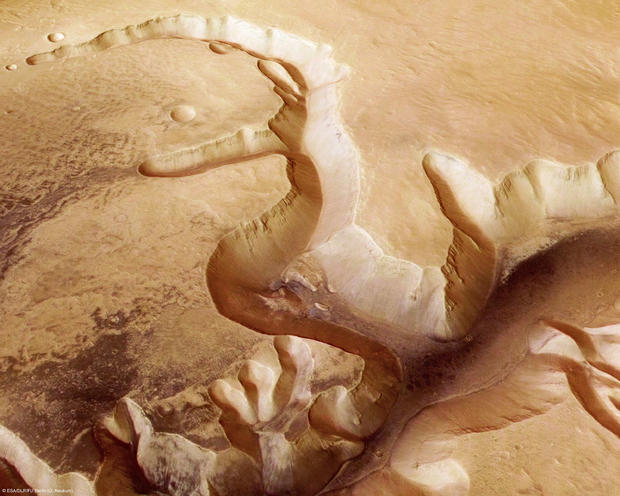First time ever Mars livestream a chance "to get as close as it's currently possible" to the red planet
For the first time ever Friday, people had the opportunity to get a near live look at Mars thanks to the European Space Agency.
For one hour on Friday, the the agency streamed live images of the red planet back to Earth on its YouTube channel, beginning at about 12 p.m. Eastern time.
Up until Friday, all images seen of the planet were technically of its past, the agency said, as those previous captured images only showed it "once light has bounced off it or is sent by orbiters and landers exploring it, and travels to Earth."
Friday's event, which was part of a celebration for the 20th birthday of the agency's Mars Express mission, was a chance "to get as close as it's currently possible" to Mars, the agency said. During the live stream, new images from the agency's Visual Monitoring Camera were sent roughly every 50 seconds, with it taking about 18 minutes between the time the images were taken from orbit to finally showing up on the screen.
"That's 17 minutes for light to travel from Mars to Earth in their current configuration, and about one minute to pass through the wires and servers on the ground," the ESA said. "Note, we've never tried anything like this before, so exact travel times for signals on the ground remain a little uncertain."
There were some kinks along the way. The Associated Press reported that transmission was disrupted at times by rainy weather at the deep space-relay antenna in Spain.
The Visual Monitoring Camera, also known as the Mars Webcam, has been used for decades to help research the planet. It resides more than 1.8 million miles away from Earth, and as one researcher said simply, it's "old."
"This hasn't been tried before," spacecraft operations manager James Godfrey said prior to the event. "And to be honest, we're not 100% certain it'll work."
However, Godfrey was "optimistic" things will work out.
"Normally, we see images from Mars and know that they were taken days before," he said. "I'm excited to see Mars as it is now – as close to a martian 'now' as we can possibly get!"
ESA's Mars Express has been orbiting the planet since 2003 and has been taking images, mapping its materials and exploring its atmosphere and composition ever since. The agency says the mission has helped create a "far fuller and more accurate understanding" than ever before.






